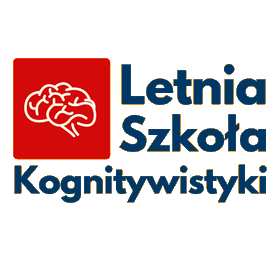Psy dorównują inteligencją społeczną dwuletnim dzieciom
Psy dorównują inteligencją społeczną dwuletnim dzieciom
Psy, pod względem poziomu i specyfiki inteligencji społecznej, przypominają małe dzieci. Tak dobrych wyników w tej dziedzinie nie uzyskują nawet szympansy – czytamy na łamach czasopisma Animal Behaviour.
Naukowcy z Uniwersytetu Arizony (USA) przeprowadzili na 552 psach różnych ras, 105 dwuletnich dzieciach i 106 dziko żyjących szympansach wszechstronne badanie umiejętności poznawczych. Zdolności społeczne mierzyli m.in. poprzez udzielanie maluchom i zwierzętom niewerbalnych wskazówek (wskazywanie palcem, bądź patrzenie w określonym kierunku) co do umiejscowienia ukrytych smakołyków lub zabawek.
Okazało się, że szympansy dobrze radziły sobie w zadaniach wymagających wykorzystania zdolności przestrzennych, ale w testach umiejętności komunikacyjnych i kooperacyjnych to psy wiodły prym. Wyniki osiągane przez czworonogi były zbliżone do tych uzyskiwanych przez małe dzieci. Do tej pory w badaniach nad ludzką ewolucją po odpowiedzi zwracano się raczej w kierunku najbliższych krewnych człowieka – szympansów, goryli, czy małp bonobo. Badania ewolucyjne z udziałem czworonogów to zupełnie nowa dziedzina, która ma szansę okazać się pomocna w zrozumieniu natury inteligencji społecznej, a co za tym idzie zaburzeń obejmujących deficyty w zakresie umiejętności społecznych, np. autyzmu. Być może to właśnie psy stanowią brakujący element układanki.
Polecam!
Individual differences in cooperative communicative skills are more similar between dogs and humans than chimpanzees
The cultural intelligence hypothesis proposes that human cognition is unlike that of other species primarily as a result of humans’ early emerging skills for reasoning about the social world (Herrmann, Call, Hernandez-Lloreda, Hare, & Tomasello, 2007). Beginning around 9 months of age, human infants exhibit a suite of social cognitive skills including gaze following and the production and comprehension of cooperative communicative gestures (Carpenter et al., 1998 ; Tomasello, 1999). These nascent abilities subsequently scaffold processes such as language acquisition, symbolic reasoning and social learning during the first years of life (Tomasello, 1999). The cultural intelligence hypothesis predicts that while adult human minds may differ from those of other animals in many respects, these differences arise largely because of early emerging social cognitive skills for sharing, and following and directing the attention of others, which support the cultural acquisition of knowledge across cognitive domains.
The phylogenetic predictions of the cultural intelligence hypothesis were tested in a large-scale comparison of human infants and nonhuman apes tested with a comprehensive battery of cognitive tasks (Herrmann et al., 2007). Whereas nonhuman apes and 2.5-year-old infants performed similarly on tests of physical cognition (e.g. object permanence, spatial reasoning, number discrimination), already by 2 years of age, humans outpaced other apes with regard to social cognition (e.g. communication, theory of mind, social learning). These findings were recently corroborated in a 3-year longitudinal study of human infants and age-matched bonobos, Pan paniscus, and chimpanzees, Pan troglodytes. Specifically, the earliest differences in cognition between human children and nonhuman apes related to measures of social cognition, with differences in physical cognition unfolding later in development ( Wobber, Herrmann, Hare, Wrangham, & Tomasello, 2014).
Building on these findings, psychometric analyses revealed surprisingly divergent patterns underlying individual differences in human infants and chimpanzees (Herrmann, Hernandez-Lloreda, Call, Hare, & Tomasello, 2010). Specifically, individual differences in human infants were best described by a three-factor model including clusters of skills for (1) solving physical problems, (2) spatial reasoning and (3) social cognition. In contrast, although chimpanzees shared a (presumably homologous) factor for spatial reasoning with humans, only human infants had a unique factor corresponding to social cognition (Herrmann, Hernandez-Lloreda et al., 2010). Therefore, although chimpanzees are remarkably socially sophisticated (Goodall et al., 2010 ; de Waal and Tyack, 2003), the organizational properties of their cognition may be markedly different than those of humans.
Research with domestic dogs, Canis familiaris, has challenged the notion that humans’ early emerging social skills are completely unique to our species ( Hare & Tomasello, 2005). For example, dogs exploit a wide range of cooperative communicative signals more similarly to humans than nonhuman apes ( Brauer et al., 2006; Hare and Tomasello, 2005; Hare et al., 2002; Kaminski and Nitzschner, 2013 ; Téglás et al., 2012), use fast mapping to learn object labels ( Kaminski et al., 2004 ; Pilley and Reid, 2011) and commit the same socially mediated perseverative error as human infants in the Piagetian A not B task (Topál, Gergely, Erdöhegyi, Csibra, & Miklósi, 2009). Importantly, these similarities between dog and human cognition appear to be restricted to the social domain. Whereas dogs outperform nonhuman apes in cooperative communicative social tasks, they are far less skilled than apes when solving physical problems (Brauer et al., 2006). To explain these findings, the domesticated cognition hypothesis ( Hare et al., 2012; Hare et al., 2002 ; Hare et al., 2005) proposes that humans and dogs underwent similar selective pressures for ‘survival of the friendliest’, leading to convergent skills for cooperative communication in both species (Hare, 2017).
A central prediction of this hypothesis is that the underlying structure of dog social skills for cooperative communication should resemble that of humans. That is, individual differences in dog cooperative communication should exhibit similar patterns of covariance to human infants, and this pattern should be more similar between dogs and humans than between either of these species and nonhuman apes. Therefore, the critical test of this hypothesis requires a comprehensive dog cognition test battery, similar to that used with human infants and nonhuman apes, and a heterogeneous sample of hundreds of dogs to identify the correlational structure underlying individual differences. To test this prediction we examined a sample of 552 dogs tested in the dog cognition test battery and compared the correlational structure of individual differences in dogs to similar data from human infants and chimpanzees (Herrmann, Hernandez-Lloreda et al., 2010).
- Evan L. MacLean, Esther Herrmann, Sunil Suchindran, Brian Hare – Individual differences in cooperative communicative skills are more similar between dogs and humans than chimpanzees. Animal Behaviour. Volume 126, April 2017, Pages 41–51
- Więcej na temat badania można przeczytać pod adresem: http://www.sciencedirect.com/science/article/pii/S0003347217300064






